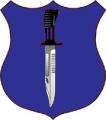It's the way to go, if you've been trained like an Israeli. Yes, it has near identical mobility to their MBT, as it uses the same chassis and running gear, with similar power to weight. I've climbed all over one and visited a platoon of them that was bouncing around the Golan. They're impressive.
If you took almost any MICV, ditched the turret, added more armour in place of it, and increased the dismount seating to 8-10, then you'd be in business.
...but the application of the vehicle is as important as the vehicle itself. I think MICVs are just a dumb idea, but obviously has merit if skilfully employed, by good men, against an inferior opponent.










 ) for vehicles with less complexity (thus easier maintenance and a vastly reduced log tail). I can just see in my minds eye a GCV infantry platoon/coy being rendered combat ineffective because some ideeeeiot (said in my best County Cork accent) gave the onboard Vetronics a virus or accidentially sat on a control screen....
) for vehicles with less complexity (thus easier maintenance and a vastly reduced log tail). I can just see in my minds eye a GCV infantry platoon/coy being rendered combat ineffective because some ideeeeiot (said in my best County Cork accent) gave the onboard Vetronics a virus or accidentially sat on a control screen....
 ). As does the issue of whether
). As does the issue of whether 



Bookmarks